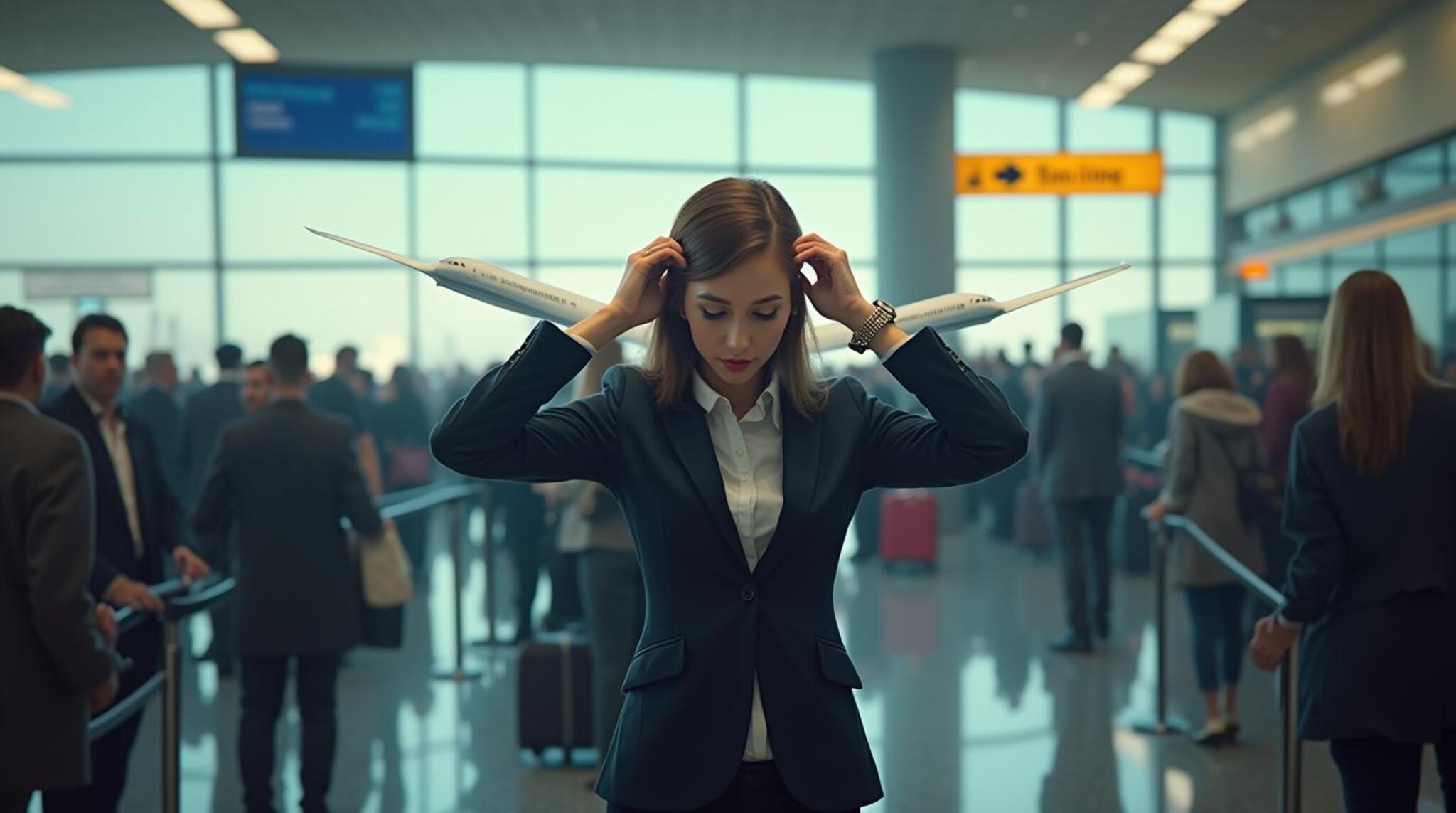Chicago Airport Chaos: Government Shutdown Impact Revealed
Introduction: Why Chicago Travelers Should Pay Attention
Government shutdowns create big problems for travelers. Chicago airports face serious risks. O'Hare and Midway serve millions of passengers yearly. These airports need federal workers to function properly. During shutdowns, these workers stop getting paid. Many cannot afford to work without pay. This causes staffing shortages. Security lines get longer. Flights get delayed or canceled. Travel plans get ruined.
Chicago is a major travel hub. O'Hare is one of the busiest airports worldwide. It connects travelers to destinations across the globe. Midway serves many domestic flights. Both airports employ thousands of federal workers. These include TSA agents, air traffic controllers, and customs officers. Their work keeps airports safe and efficient. Without them, travel becomes difficult and stressful.
This guide explains everything you need to know. We cover how shutdowns affect Chicago airports. We provide practical tips for travelers. We share real examples from past shutdowns. We answer common questions. Our goal is simple. We want to help you travel smarter during uncertain times. Knowledge is power when facing potential travel disruptions.
How Government Shutdowns Affect Air Travel
What Happens to Federal Aviation Workers
Federal aviation workers face difficult choices during shutdowns. They must work without pay or stay home. TSA agents screen passengers and baggage. They ensure security at checkpoints. Air traffic controllers guide planes safely. They prevent collisions and manage traffic flow. Customs officers process international travelers. They check passports and inspect goods.
These workers are essential for airport operations. During shutdowns, they don't receive paychecks. Many live paycheck to paycheck. They cannot pay bills or buy groceries. Some call in sick to find other work. Others protest by not working. This leads to staff shortages. Security lines grow longer. Wait times increase significantly. Flight delays become more common.
The Transportation Security Administration reports staffing data daily. During the 2019 shutdown, absentee rates doubled. Some airports reached 10% absenteeism. This caused massive security delays. Travelers missed flights despite arriving hours early. The situation became critical at major hubs like O'Hare.
Impact on Airport Operations and Safety
Airport operations suffer during government shutdowns. Safety remains the top priority. But efficiency declines dramatically. Fewer TSA agents mean slower screening. Fewer air traffic controllers mean reduced capacity. Airports cannot handle normal traffic volumes. They must reduce flight schedules.
Safety inspections may get delayed. FAA safety inspectors work without pay. They oversee aircraft maintenance and repairs. During shutdowns, some inspections get postponed. This doesn't mean flying becomes unsafe. But it increases risks over time. Airlines continue their own safety checks. They maintain high standards regardless of government funding.
According to Federal Aviation Administration data, near-miss incidents increased during past shutdowns. Stress and fatigue affect controller performance. The National Airspace System remains safe. But margin for error decreases when staffing drops.
Chicago's Major Airports: O'Hare and Midway
O'Hare International Airport (ORD)
O'Hare is Chicago's largest airport. It's among the world's busiest airports. It serves over 80 million passengers annually. O'Hare has four terminals and nine runways. It handles domestic and international flights. Major airlines use O'Hare as a hub. These include United Airlines and American Airlines.
O'Hare employs approximately 1,200 TSA officers. It has about 100 air traffic controllers. During normal operations, security wait times average 15-20 minutes. During shutdowns, these can exceed two hours. The airport has 194 security lanes. But without enough staff, many lanes close.
International travelers face additional challenges. Customs and Border Protection officers process arrivals. During shutdowns, fewer officers mean longer waits. Passengers may wait hours to clear customs. This causes missed connections and frustration.
Midway International Airport (MDW)
Midway is Chicago's smaller airport. It serves mainly domestic flights. Southwest Airlines is its major carrier. Midway handles about 22 million passengers yearly. It has one main terminal with three concourses. Despite its smaller size, Midway faces similar challenges during shutdowns.
Midway employs around 400 TSA officers. It has approximately 30 air traffic controllers. During the 2019 shutdown, Midway experienced significant delays. Some security lines stretched outside the terminal. Travelers waited in cold weather. This created uncomfortable and potentially dangerous situations.
Both airports rely on federal funding for improvements. O'Hare's massive expansion project requires federal approval. Shutdowns delay these important upgrades. This affects long-term capacity and passenger experience.
Real Examples from Past Government Shutdowns
The 2019 Shutdown: A Case Study
The 2019 government shutdown lasted 35 days. It was the longest in U.S. history. Chicago airports felt significant impacts. TSA absentee rates reached 10% at O'Hare. Some security checkpoints closed entirely. Remaining lines stretched through terminals.
On January 14, 2019, O'Hare experienced particularly bad delays. Some travelers reported three-hour wait times. Many missed their flights despite early arrivals. Airlines had to rebook passengers. This created cascading delays throughout the system.
Air traffic controllers worked without pay. Many reported extreme stress. Some considered finding other jobs. The National Air Traffic Controllers Association expressed serious concerns. They warned about safety risks from fatigue and distraction.
Traveler Experiences and Stories
Real travelers shared their shutdown experiences. Business traveler Sarah Johnson missed an important meeting. "I arrived three hours early," she said. "But security lines were unbelievable. I watched my flight depart while still in line."
Family vacationers faced similar problems. The Miller family planned a Disney World trip. They reached O'Hare four hours before their flight. They still missed their connection in Atlanta. "Our kids were crying," said Mark Miller. "The whole experience was stressful and expensive."
These stories highlight why preparation matters. During shutdowns, normal travel routines don't work. You need extra time and patience. You must have backup plans ready.
Practical Tips for Traveling During Shutdowns
Before Your Trip: Preparation Steps
- Check airport websites daily for updates
- Sign up for airline alerts and notifications
- Pack essential medications in carry-on bags
- Bring snacks and entertainment for long waits
- Consider travel insurance with cancellation coverage
- Have important phone numbers saved offline
- Download airline apps for real-time updates
- Keep charger and power bank accessible
At the Airport: Survival Strategies
- Arrive at least 3 hours before domestic flights
- Arrive at least 4 hours before international flights
- Use TSA PreCheck or Clear if available
- Wear easily removable shoes and minimal jewelry
- Keep electronics accessible for screening
- Stay calm and patient with security staff
- Monitor flight status constantly
- Have backup plans for missed connections
Alternative Transportation Options
Consider other travel methods during shutdowns. Amtrak trains serve Chicago Union Station. They travel to many major cities. Bus services like Greyhound offer affordable options. Driving might be preferable for shorter trips.
Regional airports sometimes have shorter lines. Milwaukee's Mitchell Airport is 90 minutes from Chicago. South Bend Airport is two hours away. These might offer better experiences during peak disruptions.
Frequently Asked Questions (FAQ)
How long do security waits get during shutdowns?
Wait times can exceed three hours at worst. Normal waits are 15-30 minutes. During shutdowns, plan for at least two hours. Check TSA wait time calculators before leaving home.
Do flights still operate normally?
Flights continue but delays increase significantly. Airlines may cancel some flights proactively. They try to minimize disruptions. Always check your flight status before heading to the airport.
Can I get refunds for shutdown-related cancellations?
It depends on your ticket type and airline policy. Many airlines offer waivers during major disruptions. Travel insurance might cover additional costs. Always contact your airline directly for specific situations.
Are international flights affected differently?
Yes, international flights face extra challenges. Customs and immigration processing slows down. Connecting times may need adjustment. Allow extra time for international travel during shutdowns.
How can I support airport workers during shutdowns?
Be patient and understanding with staff. Some travelers bring snacks or thank-you cards. You can also contact representatives to support back pay legislation.
Do shutdowns affect airport restaurants and shops?
Yes, fewer travelers mean less business. Some establishments may reduce hours. Prepare for limited food options during extended shutdowns.
Is TSA PreCheck worth it during shutdowns?
Absolutely. TSA PreCheck lines typically move faster. Even during shutdowns, these lanes maintain better service. The investment often pays off during disruptive periods.
Statistics and Data: The Numbers Behind Shutdown Impacts
Government shutdowns create measurable impacts. During the 2019 shutdown:
- TSA absenteeism reached 10% nationwide
- Some airports saw 300% increase in wait times
- O'Hare experienced up to 50 flight cancellations daily
- Air traffic controller training stopped completely
- FAA safety report reviews dropped by 75%
According to Airports Council International, airports lost millions in revenue. Concession sales dropped significantly. Parking revenue declined as fewer people traveled.
The U.S. Travel Association estimated nationwide economic impacts. The 2019 shutdown cost $3 billion in lost travel spending. Chicago's economy suffered particularly due to its hub status.
Step-by-Step Guide: Navigating Chicago Airports During Shutdowns
Step 1: Pre-Trip Preparation (1-2 Weeks Before)
Monitor news about potential shutdowns. Sign up for airline alerts. Consider purchasing travel insurance. Pack strategically for potential delays.
Step 2: Day Before Travel
Check TSA wait times online. Confirm flight status. Charge all electronic devices. Prepare easy-to-remove clothing for security.
Step 3: Travel Day - Getting to Airport
Leave extra early. Plan for traffic delays. Use airport apps for real-time parking availability. Have identification easily accessible.
Step 4: Security Process
Follow all TSA instructions carefully. Remove required items promptly. Be patient with screening staff. Keep boarding pass and ID ready.
Step 5: Post-Security Actions
Proceed directly to your gate. Confirm boarding time with agents. Use restrooms before boarding. Stay near your departure area.
Conclusion: Staying Informed and Prepared
Government shutdowns create real challenges for Chicago travelers. O'Hare and Midway face significant operational impacts. Understanding these risks helps you prepare effectively. Knowledge and planning make difficult situations manageable.
Remember the key lessons from this guide. Always check current conditions before traveling. Allow extra time for airport processes. Have backup plans ready. Stay patient with airport staff who work under difficult circumstances.
Chicago remains a wonderful travel destination. Its airports normally provide excellent service. During unusual events like shutdowns, flexibility becomes your greatest asset. Safe travels and smart planning will get you where you need to go.
For ongoing updates, bookmark the Chicago Department of Aviation website. Follow major airlines on social media. Stay informed about political developments that could affect travel. Your awareness and preparation make all the difference.

